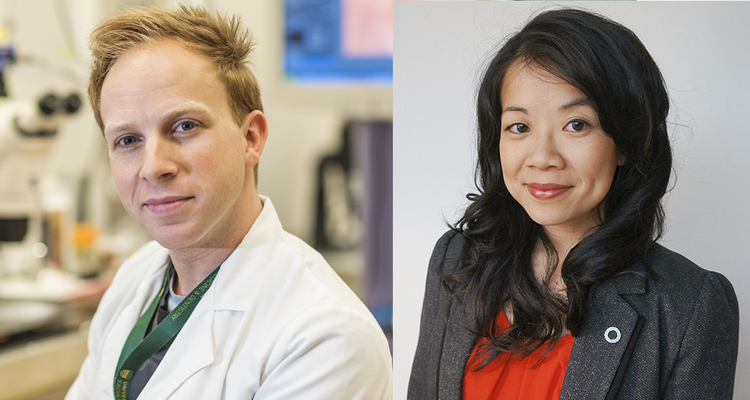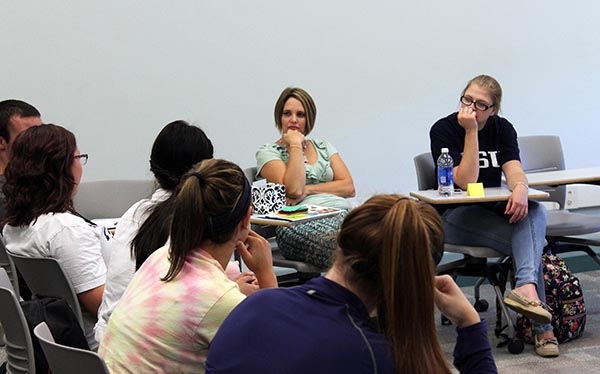Main Menu

It doesn’t matter how many times you’ve experienced it, pregnancy can be both exhilarating and daunting simultaneously. Experiencing the biological process is one part of the journey but there is also a new relationship you build with healthcare during pregnancy. There are numerous checkups and routine tests that encompass pre-natal care. One of those important tests looks for gestational diabetes. Members of our team here at KT Alberta recall stories of waddling to a lab to take one- and two-hour glucose tests, drinking dreadfully sugary, bright orange drinks required for the tests, and waiting for subsequent blood tests.

Some received false positives and went through the process twice. Some were indeed diagnosed with gestational diabetes. For any mom or mom to be, it is an anxiety-provoking experience to go through these types of test as your head becomes flooded with thoughts like: What if I fail the test? Have I done anything wrong? If I fail, what comes next? What will happen to the baby if I have gestational diabetes? What do I even know about gestational diabetes?
Dr. Roseanne Yeung, a clinical endocrinologist and assistant professor at the University of Alberta (U of A) and a member of the Alberta Diabetes Institute, was moved by the questions pregnant women have about gestational diabetes mellitus (GDM) and how to reduce stress associated with diagnosis and living with the condition. Her team, including research assistant Jamie Boisvenue and patient partner Jessette Apao, presented their work at this year’s Alberta SPOR SUPPORT Unit (AbSPORU) Summer Institute and received the best research poster award (Congratulations!).

When we met Jamie, Jessette, and others in Dr. Yeung’s team at the Summer Institute, we were very impressed by their terrific stakeholder engagement and use of co-creation methodologies for this project. This week’s post is longer than normal but that’s because, when we sat down to interview Jamie and Jessette about their winning poster, they ended up giving us a masterclass in stakeholder engagement and KT tool co-creation. We hope that you learn as much from their story as we did!

The first step towards improving GDM education was to gather feedback from women about their experiences with the GDM testing, diagnosis, and resulting education. To do this, the research team visited 5 GDM clinics across Alberta over 9 months to survey women about their perspectives on GDM and the educational resources they received.
Normally, once a woman is diagnosed with GDM after the routine sugary drink test, she is booked to attend a three-hour class and meet with a specialist, nurse, dietician, and nutritionist. Jamie learned from participants that they received relevant and necessary information in a GDM class but the volume of required reading was overwhelming to some. Furthermore, women found that information varied depending on the source (internet resources, different healthcare professionals at different sites).
This is when the team’s thoughtful strategy for stakeholder engagement and KT tool co-creation took off. Jamie and the team involved stakeholders from every level of GDM education, including women currently and/or previously living with GDM, partners, spouses, GDM clinical specialists, researchers, dietitians, and registered nurses.

It was in this stakeholder engagement phase that Jessette Apao became involved as a patient partner Her experience at her GDM clinic was that there was lots of information but also opportunities to improve the experience for others.
The team used a deliberative priority setting process , an approach promoted by Canadian Institutes of Health Research to help identify important research needs. In deliberative priority setting, a stakeholder group works together to identify key priorities around a particular research question and then ranks the priorities according to importance. Armed with the results of this process, the team began focusing on solutions that mattered to GDM health providers, women with GDM, and their supporters.
The team struck a bit of luck in their website development as there was already a website owned by diabetes endocrinologist Dr. Edmond Ryan that needed updating. Dr. Ryan endorsed co-design of the website in collaboration with the stakeholders to make it into a user-friendly and accurate health information source. Through co-creating the new website, the team was able to incorporate important content for expectant families using a people-centered design. To update the website, the team partnered with Swift Digital who also provided an in-depth user experience analysis of site behavior and usage.

The site contains information in various formats such as videos, anecdotes, and helpful instructions (e.g. for checking blood glucose or taking insulin). However, the site is meant to complement, not replace, the education or medical advice on GDM that is received in a clinic. An important priority identified by the stakeholder group was the value of in-person consultation. The site was developed to reduce stress and information overload by offering pregnant women and their partners various methods of connecting with, absorbing, and learning about GDM before and after attending a GDM education class .
We asked Jamie and Jessette to reflect on their experiences in this study. Both had very interesting feedback on the advantages of the deliberative priority-setting approach and co-creating the website. From a researcher’s perspective:
As a busy parent Jessette found the structured nature of deliberative priority setting both practical and meaningful.
The team’s stakeholder engagement doesn’t stop there. They plan to do a final upcoming phase to evaluate the new site with those who helped to design it.
Thanks so much to Jamie and Jessette for sharing their story with KT Alberta! We’re always inspired when we get to hear about such strong work coming from our home grown dedicated KT community members!
https://www.diabetes.org/diabetes/gestational-diabetes/how-will-this-impact-my-baby
http://www.diabetes-pregnancy.ca/
https://www.folio.ca/improvement-needed-in-gestational-diabetes-education-study/
https://www.mayoclinic.org/diseases-conditions/gestational-diabetes/symptoms-causes/syc-20355339
https://www.diabetes.ca/en-CA/recently-diagnosed/gestational-diabetes-toolkit
Let us know how you want to stay connected


 News + Events
News + Events

 Patient Partner Research Opportunities
Patient Partner Research Opportunities

 I agree to receive occasional emails from AbSPORU.
I agree to receive occasional emails from AbSPORU.University of Calgary Foothills Campus
3330 Hospital Dr NW
Calgary, AB T2N 4N1
College Plaza
1702, 8215 112 St NW
Edmonton, AB T6G 2C8
The Alberta SPOR SUPPORT Unit operates on and acknowledges the lands that are the traditional and ancestral territory of many peoples, presently subject to Treaties 6, 7, and 8. Namely: the Blackfoot Confederacy – Kainai, Piikani, and Siksika – the Cree, Dene, Saulteaux, Nakota Sioux, Stoney Nakoda, and the Tsuu T’ina Nation and the Métis People of Alberta. This includes the Métis Settlements and the Métis Nation of Alberta. We acknowledge the many First Nations, Métis and Inuit who have lived in and cared for these lands for generations. We make this acknowledgment as a reaffirmation of our shared commitment towards reconciliation, and as part of AbSPORU’s mandate towards fostering health system transformation.
© 2024 AbSPORU